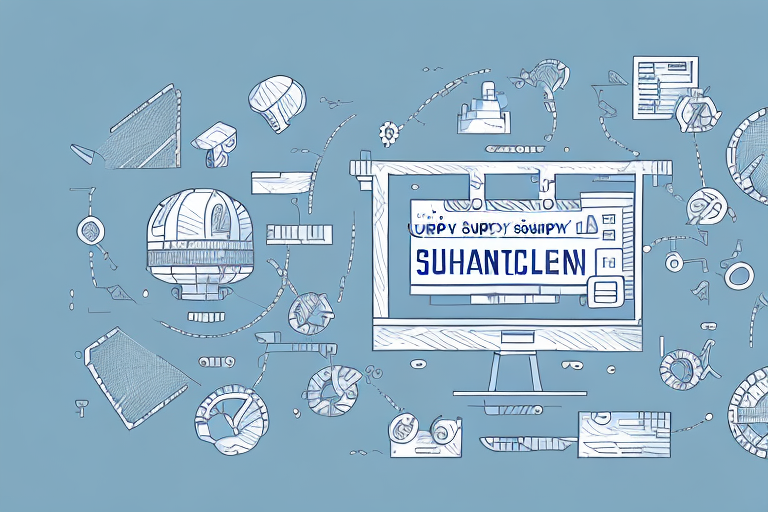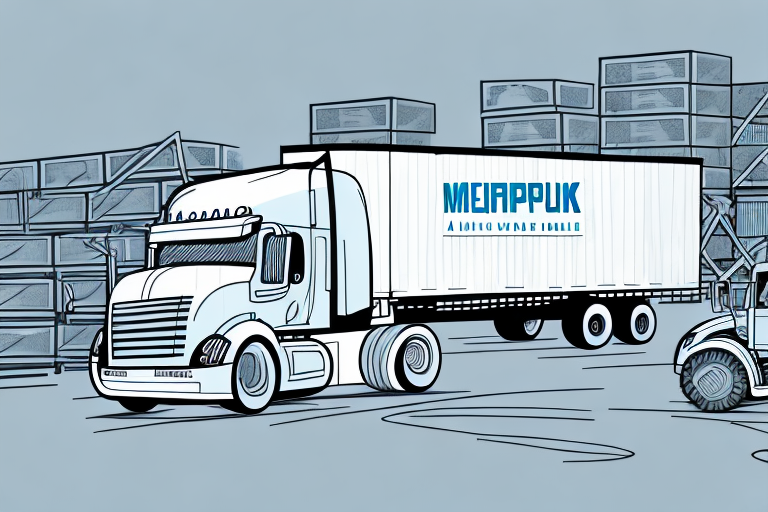Unlocking the Benefits of Chassis Split in Supply Chain Management
In the realm of efficient supply chain management, businesses continually seek methods to streamline their operations. One such strategy that has gained significant traction is chassis split. This article delves into the intricacies of chassis split, its operational mechanics, and its pivotal role in contemporary supply chain management. We will also examine its advantages and disadvantages, best practices for implementation, real-world case studies, common misconceptions, and more. Let’s explore how chassis split can transform your supply chain operations.
What is Chassis Split and How Does it Work in Supply Chain Management?
Chassis split is a logistics practice that decouples the chassis—the wheeled frame used to transport containers—from the cargo container itself. Traditionally, a chassis is designated for a single container, moving it from ports or rail terminals to its final destination. However, with chassis split, the chassis is detached from one container and reused to transport another, while the original container is loaded onto a different chassis. This approach enhances chassis utilization and reduces transportation costs, making it an appealing option for companies aiming to optimize their supply chains.
According to a recent supply chain optimization report, implementing chassis split can increase chassis utilization rates by up to 30%, significantly lowering the need for additional chassis purchases or leases. This strategy is particularly beneficial in scenarios where chassis availability is limited, allowing companies to maximize existing resources and minimize capital expenditures.
Moreover, chassis split contributes to alleviating congestion at ports and rail yards by ensuring that chassis are in constant use, thereby improving the overall flow of goods. However, it's essential to consider potential challenges, such as the time required to detach and reattach chassis and the possible need for specialized equipment or labor, which can impact transit times and operational costs.
Understanding the Importance of Efficient Supply Chain Management
Efficient supply chain management is vital for businesses striving to maintain competitiveness in today’s global market. A well-orchestrated supply chain can lead to reduced operational costs, enhanced customer satisfaction, and increased profitability. This is especially crucial for companies engaged in international trade, where containers traverse vast distances across oceans and continents.
Implementing best practices like chassis split can significantly enhance supply chain efficiency. According to the Supply Chain Management World report, businesses that optimize their supply chain processes can achieve cost savings of up to 15% annually.
Another critical component of effective supply chain management is inventory control. By accurately monitoring inventory levels and optimizing supply chain processes to prevent overstocking, companies can reduce holding costs and improve cash flow. Technologies such as inventory management software and automated ordering systems play a pivotal role in achieving these efficiencies.
Additionally, efficient supply chain management positively impacts sustainability efforts. By minimizing transportation and storage inefficiencies, businesses can lower their carbon footprint. Adopting alternative transportation methods like rail or sea and using sustainable packaging solutions further contribute to environmental sustainability.
Exploring the Role of Chassis Split in Modern Supply Chain Management
Chassis split has the potential to revolutionize supply chain management across various industries. By enhancing chassis utilization, businesses can significantly cut transportation costs, boost operational efficiency, and reduce their environmental impact. Furthermore, chassis split offers greater flexibility in transportation planning, allowing companies to allocate chassis resources dynamically based on real-time demand rather than being constrained by the availability of specific chassis.
This flexibility is particularly beneficial in industries experiencing fluctuating demand or those that require rapid adjustments to their logistics strategies. According to a study by Transportation Analytics, companies implementing chassis split strategies have seen an average efficiency improvement of 25% in their logistics operations.
Analyzing the Pros and Cons of Chassis Split in Supply Chain Management
As with any logistical strategy, chassis split presents both advantages and disadvantages. On the positive side, chassis split can be a cost-effective method to enhance supply chain efficiency by reducing the number of chassis required and minimizing empty chassis movements, thereby lowering transportation costs. For instance, a study by Logistics Insights found that companies utilizing chassis split experienced transportation cost reductions of up to 20%.
However, chassis split also introduces complexities into transportation planning. Coordinating chassis swaps requires precise timing and reliable communication with logistics partners. Additionally, the need for specialized equipment or trained personnel to perform chassis detachments and reattachments can incur additional costs. It is crucial for businesses to conduct a comprehensive cost-benefit analysis to ensure that the benefits of chassis split outweigh the potential drawbacks.
Best Practices for Implementing Chassis Split in Your Supply Chain Strategy
Successfully implementing a chassis split strategy involves several best practices:
- Comprehensive Supply Chain Analysis: Begin by thoroughly analyzing your current supply chain operations to identify areas where chassis split can provide the most benefit.
- Strategic Planning: Develop a detailed plan for chassis swaps, considering chassis availability and the scheduling of container movements.
- Collaboration with Logistics Partners: Maintain regular communication with carriers and logistics providers to ensure alignment and coordination of chassis split activities.
- Investment in Technology: Utilize software platforms that manage chassis inventory, track chassis locations, and facilitate efficient chassis swaps.
- Training and Development: Ensure that your workforce is adequately trained to handle the technical aspects of chassis splitting.
Adhering to these best practices can facilitate a smooth implementation of chassis split, maximizing its benefits while mitigating potential challenges.
How to Optimize Your Supply Chain Using Chassis Split Technology
Technology plays a crucial role in optimizing supply chains through chassis split. Several technological solutions can enhance the effectiveness of chassis split strategies:
- Chassis Inventory Management Software: Platforms that track chassis inventory, monitor chassis locations in real-time, and manage chassis assignments can streamline operations.
- Telematics Solutions: Real-time data on chassis and container movements provided by telematics can aid in informed decision-making and efficient transportation planning.
- Automated Scheduling Systems: These systems can optimize chassis swap schedules, reducing delays and ensuring timely container movements.
By integrating these technologies, businesses can enhance the efficiency and reliability of their chassis split strategies, leading to improved overall supply chain performance.
The Future of Supply Chain Management with Chassis Split Innovations
The landscape of supply chain management is continually evolving, and chassis split is set to play a significant role in its future. Innovations such as autonomous chassis are already being tested, promising to further enhance the efficiency of container transportation by reducing the need for manual intervention in chassis handling.
With the exponential growth of e-commerce and the increasing demand for faster delivery times, the need for optimized supply chain solutions like chassis split will only intensify. Ongoing investments and developments in chassis split technology and practices are expected to contribute to more resilient and agile supply chains in the coming years.
Case Studies: Real-World Examples of Successful Chassis Split Implementation
Examining real-world applications of chassis split provides valuable insights into its practical benefits and challenges:
- Maersk Line: As the world's largest container shipping company, Maersk implemented a chassis split program in their U.S. operations. This initiative led to a 26% reduction in their chassis fleet, resulting in substantial cost savings and enhanced operational efficiency. More details can be found in their case study.
- OOCL: The Hong Kong-based shipping company OOCL adopted a chassis split program at the Port of Long Beach. By utilizing a dedicated chassis pool, OOCL achieved a 30% reduction in chassis-related costs while maintaining high service quality. Learn more about their approach on the OOCL official website.
These case studies illustrate the tangible benefits of chassis split, including cost reductions, improved efficiency, and enhanced service quality.
Overcoming Challenges and Obstacles: Tips for a Smooth Transition to Chassis Split
Transitioning to a chassis split program can present several challenges. To ensure a smooth implementation, consider the following tips:
- Engage Stakeholders: Collaborate closely with carriers and logistics providers to gain their support and ensure they understand the benefits of the chassis split program.
- Address Regulatory Compliance: Be aware of and adhere to any regulatory requirements related to chassis ownership, maintenance, and transportation.
- Invest in Training: Provide comprehensive training for your team to handle the technical aspects of chassis splitting efficiently.
- Implement Robust Monitoring: Regularly evaluate the chassis split program to identify areas for improvement and make necessary adjustments.
By proactively addressing these challenges, businesses can facilitate a successful transition to chassis split, maximizing its benefits while minimizing disruptions.
Top Industries that Can Benefit from Chassis Split in Supply Chain Management
While chassis split is applicable across various sectors that utilize container transportation, certain industries can particularly benefit from its implementation:
- Pharmaceuticals: Handling high-value, time-sensitive goods requires the speed and flexibility that chassis split provides.
- Perishable Foods: The ability to quickly reallocate chassis ensures that perishable goods reach their destinations promptly, maintaining quality and safety.
- Agriculture: Industries facing equipment shortages can leverage chassis split to maximize the use of available chassis, ensuring timely delivery of agricultural products.
- Construction: Construction materials often require flexible and efficient transportation solutions, making chassis split an ideal strategy.
By adopting chassis split, these industries can enhance their logistical operations, ensuring timely and cost-effective delivery of goods.
Measuring ROI: Assessing the Financial Impact of Chassis Split Implementation
Determining the return on investment (ROI) of a chassis split program is crucial for evaluating its effectiveness. This assessment can be conducted by analyzing various financial and operational metrics:
- Transportation and Chassis-Related Costs: Compare costs before and after implementing chassis split to identify savings.
- Operational Efficiency: Measure improvements in chassis utilization rates and reductions in empty chassis movements.
- Container Throughput: Assess increases in the number of containers transported within a given timeframe.
- Environmental Impact: Evaluate reductions in carbon emissions resulting from optimized chassis usage.
For example, businesses that have implemented chassis split have reported an average ROI of 18% within the first year, driven by cost savings and enhanced operational efficiencies. Accurate tracking of these metrics enables companies to make informed decisions regarding future investments in chassis split initiatives.
The Role of Technology in Enhancing the Capabilities of Chassis Split
Technology is a cornerstone in optimizing chassis split strategies. Various technological advancements can significantly enhance the capabilities and effectiveness of chassis split programs:
- Inventory Management Systems: Advanced software solutions can track chassis inventory in real-time, manage chassis assignments, and predict availability based on demand patterns.
- Telematics and IoT: Integrating telematics and Internet of Things (IoT) devices allows for continuous monitoring of chassis and container movements, providing valuable data for decision-making.
- Predictive Analytics: Utilizing data-driven insights, predictive analytics can forecast demand and optimize chassis allocation, reducing bottlenecks and enhancing efficiency.
- Machine Learning: Machine learning algorithms can analyze vast datasets to identify patterns and trends, enabling more accurate demand forecasting and supply chain optimization.
By leveraging these technological tools, businesses can enhance the efficiency, reliability, and scalability of their chassis split programs, ensuring they remain competitive in a dynamic market environment.
Predictive Analytics and Machine Learning: The Future of Supply Chain Optimization with Chassis Split
Looking ahead, predictive analytics and machine learning are poised to transform supply chain optimization, particularly in the context of chassis split. These technologies analyze extensive datasets related to container movements, chassis usage, and demand fluctuations to generate actionable insights. For instance:
- Demand Forecasting: Predictive models can anticipate future demand for chassis, allowing for proactive resource allocation and reducing instances of chassis shortages.
- Operational Efficiency: Machine learning algorithms can optimize chassis routing and scheduling, minimizing transit times and reducing operational costs.
- Risk Management: Predictive analytics can identify potential disruptions in the supply chain, enabling businesses to develop contingency plans and maintain uninterrupted operations.
As these technologies continue to evolve, their integration into chassis split programs will enable businesses to achieve unprecedented levels of efficiency and cost savings. The synergy between predictive analytics, machine learning, and chassis split is set to drive the next wave of innovation in supply chain management.
Addressing Common Misconceptions about Chassis Split in Supply Chain Management
Despite its benefits, chassis split is often surrounded by several misconceptions:
- Increased Complexity: A prevalent belief is that chassis split adds complexity to supply chain operations. However, when implemented with the right technologies and best practices, chassis split can streamline operations and enhance efficiency.
- Industry-Specific Applicability: Some assume that chassis split is only suitable for particular industries or transportation modes. In reality, any sector utilizing container transportation can benefit from chassis split, irrespective of the type of cargo or transportation mode.
- High Initial Costs: While there may be initial investments in technology and training, the long-term cost savings and efficiency gains from chassis split can offset these expenditures.
Addressing these misconceptions through education and demonstration of tangible benefits can facilitate broader adoption of chassis split strategies across industries.
Conclusion
Chassis split emerges as a pivotal strategy for businesses aiming to optimize their supply chains and maintain a competitive edge. By enhancing chassis utilization, companies can achieve significant reductions in transportation costs, improve overall operational efficiency, and minimize their environmental footprint. While the implementation of a chassis split program presents certain challenges, careful planning, collaboration with logistics partners, and the integration of advanced technologies can overcome these obstacles. Furthermore, the ongoing advancements in predictive analytics and machine learning promise to further elevate the effectiveness of chassis split strategies, heralding a new era of supply chain management marked by efficiency and resilience.






















